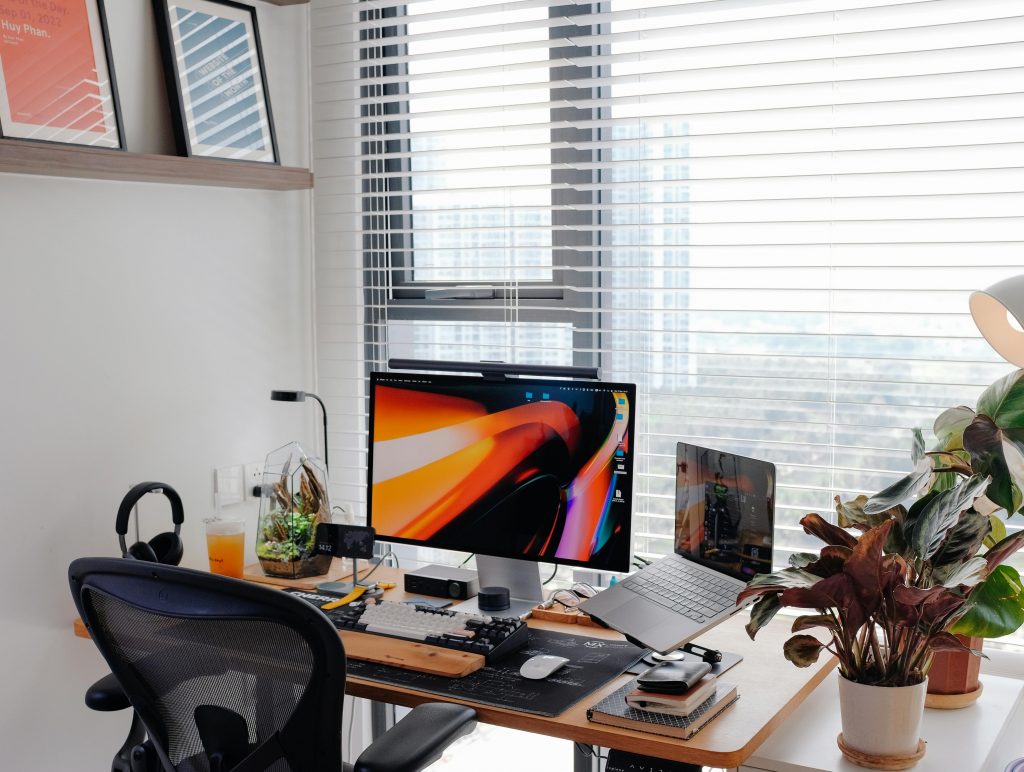The pandemic forced us all into virtual meetings overnight, and for a while, “anything goes” was the standard. Pajama bottoms during board calls? Sure. Pets interrupting presentations? Charming. Terrible audio that made everyone sound like they were calling from a submarine? We all just dealt with it.
But here’s the reality: we’re not in crisis mode anymore. Your clients, colleagues, and stakeholders expect better. Much better.
📊 Download the Quick Reference Infographic
The New Standard for Virtual Professionalism

The organizations thriving in today’s hybrid work environment have moved beyond basic functionality to create virtual experiences that rival—and sometimes exceed—in-person meetings. Research from Harvard Business Review shows that well-executed virtual meetings can actually increase engagement and productivity when done correctly.
Your Technical Foundation Matters
Here are the virtual meeting best practices that make the difference. Let’s start with the basics that aren’t basic anymore:
Lighting: You should be clearly visible without dramatic shadows or backlighting that turns you into a silhouette. Natural light from a window facing you is ideal, but a simple ring light or desk lamp can work wonders.
Camera Quality and Positioning: Your camera should be at eye level and you should be facing it directly—engage with your camera as you would a person sitting across from you. If you’re using your laptop camera, position yourself to face it squarely, or invest in a separate camera that you can attach to your main monitor for better positioning and quality. The difference is immediately noticeable.
Audio Quality: Poor audio quality reduces comprehension by up to 40%. Invest in a decent headset or external microphone. Your built-in laptop mic probably isn’t cutting it.
Appearance: You don’t need a three-piece suit, but you should look like you’re ready for a professional interaction. If you’re like many folks and your bedroom doubles as your office, use a virtual background or position yourself in front of a wall that isn’t obviously your bedroom.

Know Your Platform Inside and Out
You don’t need to be an expert, but you should know enough to be dangerous. Your audience shouldn’t have to suffer through you learning the platform in real-time. Know the lay of the land:
- How to share your screen
- How to mute attendees if needed
- Where the chat function is located
- Whether it has whiteboard features and how to use them
- If transcription is available (this can save you from the double duty of presenting and taking notes)
- How to manage breakout rooms if applicable
Pro tip: Virtual meeting tools are constantly improving with unexpected updates. Make sure you have the latest version installed so you aren’t met with a required update when your guests are waiting to join.
Test When It Matters
While you don’t need to run a full tech rehearsal before every casual check-in, for important meetings or presentations, the extra preparation is worth it. This means:
- Checking your video and audio quality
- Ensuring your internet connection is stable
- Verifying that any screen sharing or presentation materials work properly
- Closing any private, embarrassing, or sensitive applications
Starting a meeting with technical difficulties takes the wind out of your sails and impacts the tone of the entire session, affecting both your confidence and your audience’s engagement.
Structure Creates Success

The Power of a Clear Agenda
Every meeting invite should include a clear agenda, and you should share it again at the beginning of the meeting. This can be as simple as posting it in the chat or sharing your screen briefly. Studies show that meetings with clear agendas are 67% more likely to achieve their objectives.
The Human Touch in Digital Spaces
Start with 3-5 minutes of connection time. This buffer allows for:
- Latecomers to join without disrupting the flow
- Technical issues to be resolved
- Human connection that makes the rest of the meeting more productive
Remember: A gentle smile goes a long way in creating a welcoming virtual environment from the moment people join.
Inclusive Facilitation

Facilitation is just as important as your technical setup. Ensure your attendees are able to engage meaningfully. Use the accessibility tools available so your audience can choose how they interact—everyone may not be comfortable speaking up or posting in the group chat.
Master facilitators of virtual meetings:
- Monitor the chat actively for questions, comments, and technical issues (including direct messages)
- Watch for raised hands (both digital and physical)
- Share materials beforehand when possible so participants can follow along on their own devices
- Leave time for questions at the end—silence in virtual meetings doesn’t mean understanding
Remember: You can see in your thumbnail a sample of what your audience sees, which helps you gauge their experience.
The Follow-Through
Every effective virtual meeting ends with follow-up. This could be:
- A simple thank you email
- Sharing presentation materials or recordings
- Scheduling the next touchpoint
- Summarizing action items and next steps
The One Rule to Rule Them All

Here’s the truth: There’s only one rule for effective virtual meetings—think of your audience.
When you keep your participants’ experience at the center of every decision, everything else falls into place:
- You’ll test your tech because you want them to hear you clearly
- You’ll prepare an agenda because you respect their time
- You’ll monitor engagement because you want them to feel included
- You’ll follow up because you value the relationship
Your virtual meetings are a direct reflection of your professional standards. In today’s hybrid world, this isn’t just about convenience—it’s about credibility, respect, and understanding. Meetings have a purpose (or at least they should)—holding an effective meeting allows you to achieve that purpose.
These are all the virtual meeting best practices I’ve learned and developed throughout my career in meeting facilitation. I created this free resource because effective virtual meetings are a skill that can benefit so many professionals, yet few of us were ever formally taught how to do them well. Whether you’re hosting client presentations, team check-ins, or board meetings, these strategies can transform your virtual interactions from functional to exceptional.
🚀 Download the Complete Visual Guide
Did you find this guide on virtual meeting best practices useful? Share your own virtual meeting tips and experiences in the comments below—your insights help our entire community grow.
Leave a Reply